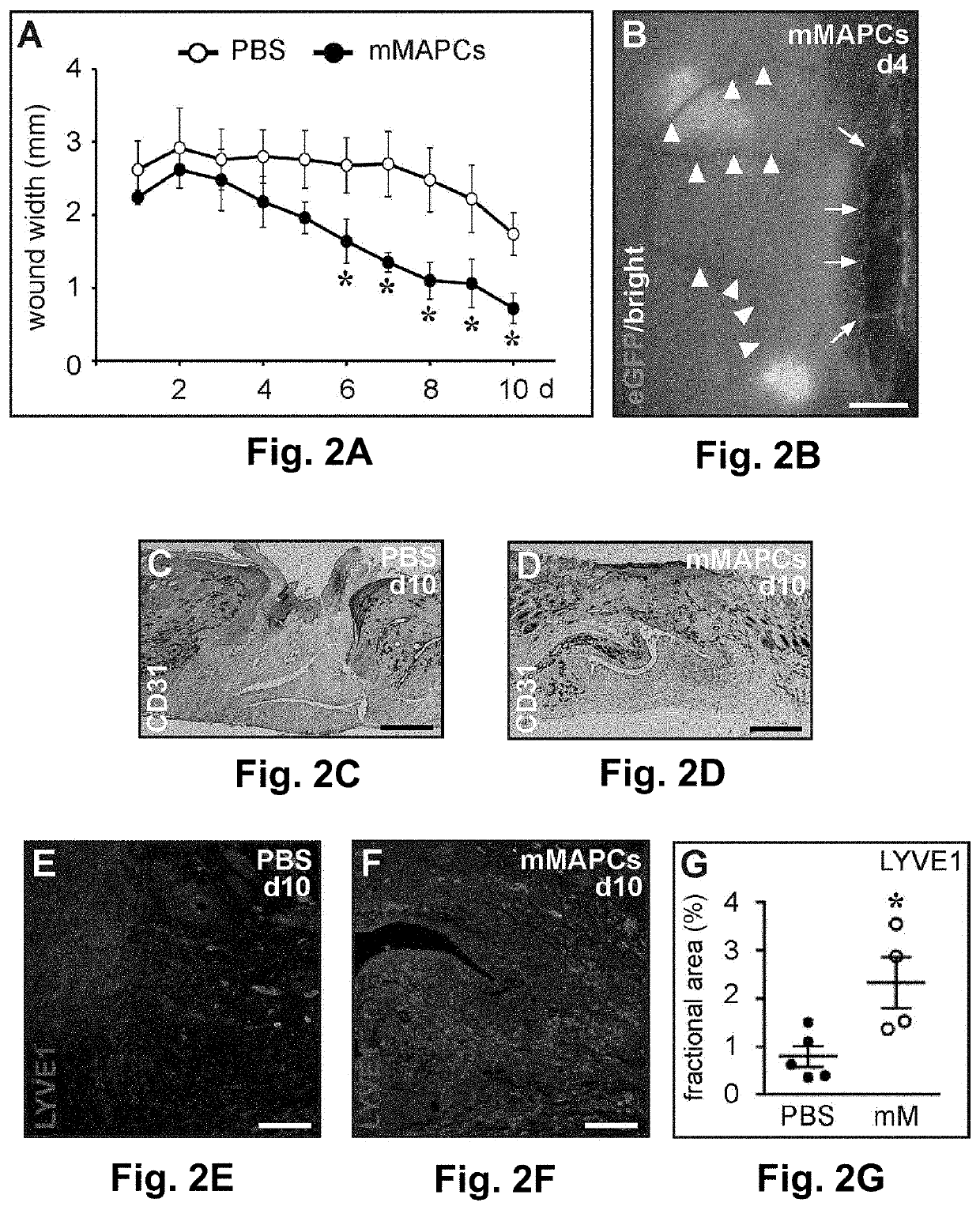Stem cells for wound healing
a stem cell and wound technology, applied in the field of wound healing methods, can solve the problems of severe skin damage, accompanied by systemic risk, few things to happen, etc., and achieve the effects of improving lymphocyte angiogenesis, promoting cutaneous wound healing, and rapid re-epithelialization
- Summary
- Abstract
- Description
- Claims
- Application Information
AI Technical Summary
Benefits of technology
Problems solved by technology
Method used
Image
Examples
example
MAPC Support Lymphatic Vessel Growth in Lymphedema
MAPCs have Lymphvasculogenic and Lymphangiogenic Potential
[0156]The inventors investigated whether MAPCs have the inherent capacity to give rise to LECs. First, they confirmed that MAPCs gain expression of general EC markers upon VEGF-A exposure (FIG. 1A, B). Prox1, the masterswitch of lymphatic differentiation, was significantly induced in MAPCs at 2w of endothelial differentiation and its expression levels remained stable until 1w later (FIGS. 1A,B). Prox1 induction may also have triggered expression of additional lymphatic genes (i.e., Pdpn and Itg9a), known to be upregulated by forced Prox1 expression(36). A fraction (21±6%) of MAPCs exposed to VEGF-A also expressed LYVE1 (shown at the protein level for mMAPCs; FIG. 1C). Notably, induction of lymphatic marker gene expression in hMAPCs was not further improved in the presence of lymphangiogenic GF VEGF-C(shown for LYVE1 in FIG. 1D; PROX1 fold-induction versus d0 was also comparabl...
PUM
| Property | Measurement | Unit |
|---|---|---|
| temperature | aaaaa | aaaaa |
| thickness | aaaaa | aaaaa |
| MW | aaaaa | aaaaa |
Abstract
Description
Claims
Application Information
 Login to View More
Login to View More - R&D
- Intellectual Property
- Life Sciences
- Materials
- Tech Scout
- Unparalleled Data Quality
- Higher Quality Content
- 60% Fewer Hallucinations
Browse by: Latest US Patents, China's latest patents, Technical Efficacy Thesaurus, Application Domain, Technology Topic, Popular Technical Reports.
© 2025 PatSnap. All rights reserved.Legal|Privacy policy|Modern Slavery Act Transparency Statement|Sitemap|About US| Contact US: help@patsnap.com



